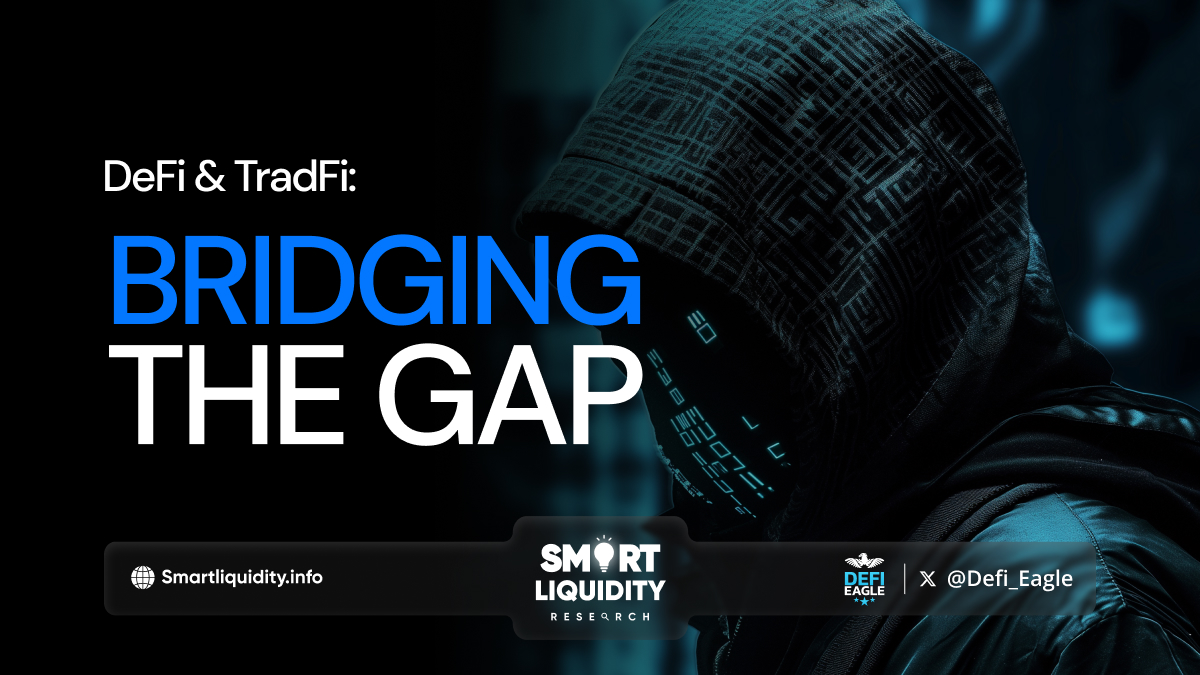DeFi & TradFi: Bridging the Gap


The financial landscape is undergoing a seismic shift. Decentralized finance (DeFi) has emerged as a disruptive force, offering a glimpse into a future of peer-to-peer financial services.
Traditional finance (TradFi), on the other hand, represents a well-established system with a global footprint. While these two worlds may seem inherently opposed, there’s a growing movement to bridge the gap between DeFi and TradFi. This convergence holds immense potential to create a more inclusive, efficient, and innovative financial ecosystem.
Why Bridging the Gap Matters
Despite their differences, both DeFi and TradFi share a common goal – to facilitate financial transactions. However, significant gaps exist, hindering a seamless flow of capital and innovation.
- Accessibility: DeFi offers an open and permissionless environment, but its complexity can be intimidating for new users. TradFi, with its established infrastructure, boasts greater accessibility, but access to some services may be limited. Bridging the gap could make DeFi more user-friendly and expand access to TradFi’s services for the underbanked.
- Regulation: The regulatory landscape surrounding DeFi is still evolving, creating uncertainty for businesses and investors. TradFi operates within a well-defined regulatory framework, providing stability but potentially stifling innovation. Finding a balance between fostering innovation and ensuring consumer protection is crucial.
- Efficiency: DeFi boasts faster settlement times and lower transaction fees compared to traditional financial systems. However, DeFi protocols can be susceptible to hacks and exploits. Combining the efficiency of DeFi with the security and risk management practices of TradFi could lead to a win-win situation.
Key Strategies for Convergence
Several key strategies can pave the way for a more integrated financial ecosystem:
- Tokenization of Real-World Assets (RWAs): TradFi assets like real estate, bonds, or even invoices can be tokenized on blockchains, enabling fractional ownership and increased liquidity. This would allow DeFi users to invest in these traditionally illiquid assets, while TradFi institutions could tap into new sources of capital.
- Stablecoin Adoption: Stablecoins, cryptocurrencies pegged to a stable asset like the US dollar, can act as a bridge between fiat currencies and DeFi protocols. This allows TradFi institutions to participate in DeFi activities without the volatility associated with other cryptocurrencies.
- Custody Solutions: Secure custody solutions are crucial for institutional investors to safely store their digital assets. Collaboration between TradFi custodians and DeFi platforms can address these concerns and attract institutional participation in DeFi.
- Regulatory Clarity: Establishing clear and consistent regulations for DeFi can provide much-needed certainty for businesses and investors. Regulatory frameworks that foster innovation while mitigating risks will be key to bridging the gap.
Benefits of Convergence
Bridging the gap between DeFi and TradFi can unlock a multitude of benefits for the entire financial system:
- Increased Financial Inclusion: DeFi has the potential to reach unbanked populations, providing access to financial services that are currently out of reach. This fosters greater financial inclusion and empowers individuals to participate in the global economy.
- Enhanced Efficiency: DeFi protocols can streamline financial processes, leading to faster settlement times and reduced transaction costs. This benefits both individuals and institutions, creating a more efficient financial system.
- Innovation and Competition: The convergence of DeFi and TradFi can foster a more competitive and innovative financial landscape. TradFi institutions can learn from the agility and innovation of DeFi, while DeFi protocols can benefit from the experience and expertise of TradFi players.
Challenges and Opportunities
Despite the potential benefits, bridging the gap comes with its own set of challenges. Security vulnerabilities in DeFi protocols, the evolving regulatory landscape, and the need for standardized infrastructure are just some of the hurdles that need to be overcome. However, the potential rewards are significant.
Collaboration between DeFi developers, TradFi institutions, and regulatory bodies will be crucial for building trust and fostering a healthy ecosystem. As technology matures and regulations become clearer, we can expect to see even more innovative solutions emerge, paving the way for a truly integrated financial future.
Conclusion: A New Dawn for Finance
The future of finance lies not in the dominance of one system over the other, but in the collaboration between DeFi and TradFi. By building bridges, we can unlock a new era of financial services that is more inclusive, efficient, and innovative. This convergence has the potential to empower individuals, reshape financial institutions, and create a more robust and dynamic global financial system.




